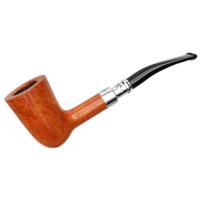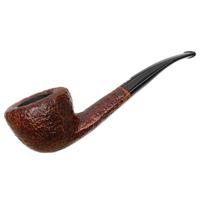Cosmic, yes, it is often block amber, but in the old (pre-WWI) days there was also amber ground, mixed with a binding agent and reformed into blocks. I think that was termed "real amber" too, and essentially was amber. But most of it was real block amber. I've seen cloudy yellow and orange, and transparent ranging from the color of apple juice to the rarest color, cherry red (rare because the color is only at the surface). Amber bending was accomplished by dipping the otherwise-finished stems into hot oil of some sort, and the curve was 'fixed' by burying them in meerschaum dust to cool evenly; this was reportedly so difficult that, in the days when pipe manufacturers had workers trained just to work with amber, a professional would find that one out of every two stems would shatter in the process. You say "real amber is rare," and you're right, but in the late 1800s it wasn't anywhere near as rare.
My guess is that others here are absolutely right. I know "ambrolith" was a term for a synthetic resin in amber color; I'd guess "cultured amber" is the same. Bauer used real amber well into the 1950s; I have a "Mastercraft" (definitely actually Bauer) from the 50s, in a spiffy red Morocco case with gold pinstripes, case stamped "Real Amber Austria," which has what's most definitely real block butterscotch Baltic amber.
I've seen a few colors of acrylic which really do look like amber. None of the yellow marbled plastic stems used by Turkish meerschaum makers in the 60s, 70s and 80s can fool me even at a distance, nor do vintage Bakelite stems; I've NEVER seen clouded amber that color. Redmanol (another phenolic resin) looks exactly like cherry amber. I wish I could find some stems made from a color CAO used on Bekler's pipes in the 90s and 00s, not really a true amber imitation but extremely pretty: it was transparent golden yellow, with brown flecks which loosely imitate the 'spangles' that appear in heat-treated amber. Briarville has an acrylic stem material which looks uncannily like butterscotch amber in photos. I plan to have a stem made from it soon and see how well it does so in person.
My guess is that others here are absolutely right. I know "ambrolith" was a term for a synthetic resin in amber color; I'd guess "cultured amber" is the same. Bauer used real amber well into the 1950s; I have a "Mastercraft" (definitely actually Bauer) from the 50s, in a spiffy red Morocco case with gold pinstripes, case stamped "Real Amber Austria," which has what's most definitely real block butterscotch Baltic amber.
I've seen a few colors of acrylic which really do look like amber. None of the yellow marbled plastic stems used by Turkish meerschaum makers in the 60s, 70s and 80s can fool me even at a distance, nor do vintage Bakelite stems; I've NEVER seen clouded amber that color. Redmanol (another phenolic resin) looks exactly like cherry amber. I wish I could find some stems made from a color CAO used on Bekler's pipes in the 90s and 00s, not really a true amber imitation but extremely pretty: it was transparent golden yellow, with brown flecks which loosely imitate the 'spangles' that appear in heat-treated amber. Briarville has an acrylic stem material which looks uncannily like butterscotch amber in photos. I plan to have a stem made from it soon and see how well it does so in person.













